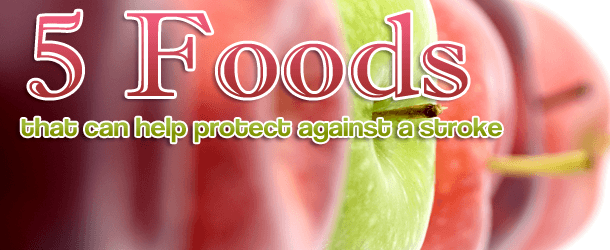
Canny as it is, the brain deploys a number of ways to preserve its functions over time. Brain cells turn out a variety of homegrown neurotrophic factors to maintain integrity. Behavioral actions such as intellectual challenges and physical activity keep brains humming, as well. The most significant way to keep brain cells healthy is to assure they get an adequate blood supply.

Unfortunately, interruption of blood flow to the brain–by blockage or hemorrhage–is common among Americans. Stroke is the third leading cause of death (after heart disease and cancer), and each year nearly 800,000 people suffer a stroke. While stroke risk dramatically increases after age 55, nearly a quarter of strokes occur among those under age 65.
High blood pressure and smoking are two of the biggest risk factors. Yet researchers are discovering that diet plays a huge role in keeping the brain and its blood supply in good working order, and, in some cases, can even limit the damage to brain cells if stroke occurs.
1. Fruit Boost
No one miracle food can eliminate the risk of stroke, but eating an array of fruits and vegetables confers significant protection. It’s the variety that’s important, say Swedish scientists, as it provides many different antioxidants that work synergistically to inhibit oxidative stress and inflammation of blood vessels, major factors in stroke risk. In a Karolinska Institute study of over 36,000 women, those with the highest antioxidant intake cut stroke risk 17 percent more than those with the lowest intake.
2. White Knights
Bright color tends to be a good guide to antioxidant content in fruits and vegetables, yet white-flesh fruits such as pears and apples have a particular ability to ward off stroke, Dutch scientists found. In a 10-year study of over 20,000 heart-healthy adults, those who consumed the most white fruits and veggies–including bananas, cauliflower, and cucumber–had a 52 percent lower risk of stroke. For every 25-gram increase in consumption of white foods–an apple averages 120 grams–stroke risk fell by 9 percent.
3. Tea by Three
Tea is yet another antioxidant powerhouse, and UCLA physicians find that drinking three cups a day cuts stroke risk by 21 percent. It doesn’t matter whether tea is green or black; both contain the antioxidant epigallocatechin gallate. Tea is also rich in theanine, an amino acid that crosses the blood-brain barrier and, researchers speculate, displaces glutamate, a neurotransmitter responsible for much nerve-cell damage after a stroke. The effect of tea is linear; the more you drink, the more protection you get.
4. Milk Ilk
Maintaining normal blood pressure throughout life is critical to cardiovascular health and to minimizing risk of heart disease and stroke. To that end, dairy products are important for optimal blood pressure regulation, at all ages. The calcium content, especially in low-fat milk products, helps tone the smooth muscle that lines arteries. In a study of 552 Canadian children ages 8 to 10, the highest intake of dairy foods was associated with the lowest levels of blood pressure, but only among normal-weight kids.
5. Fish Recipes
Add another item to the list of ways a diet well-stocked with fatty fish boosts health. Fish oil attenuates the adverse effects of air pollution on the cardiovascular system, a hidden factor in aging. Researchers gave healthy middle-aged adults 3 grams daily of fish oil supplements, or a similar dose of olive oil, and then subjected them to blasts of air pollution. Those taking fish oil were protected against negative changes in nervous system control of heart function and against increases in blood triglyceride levels.
– Hara Estroff Marano, Psychology Today
(c) 2012 SUSSEX PUBLISHERS, INC. ALL RIGHTS RESERVED DISTRIBUTED BY TRIBUNE MEDIA SERVICES, INC.

